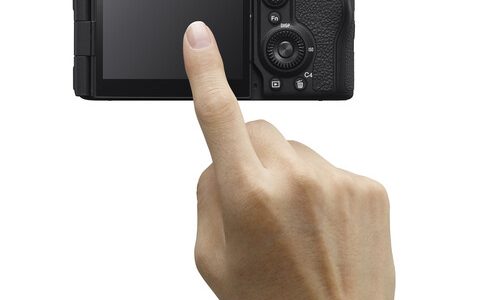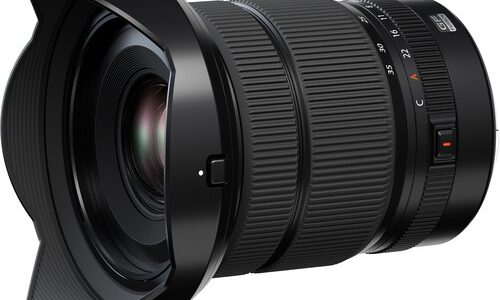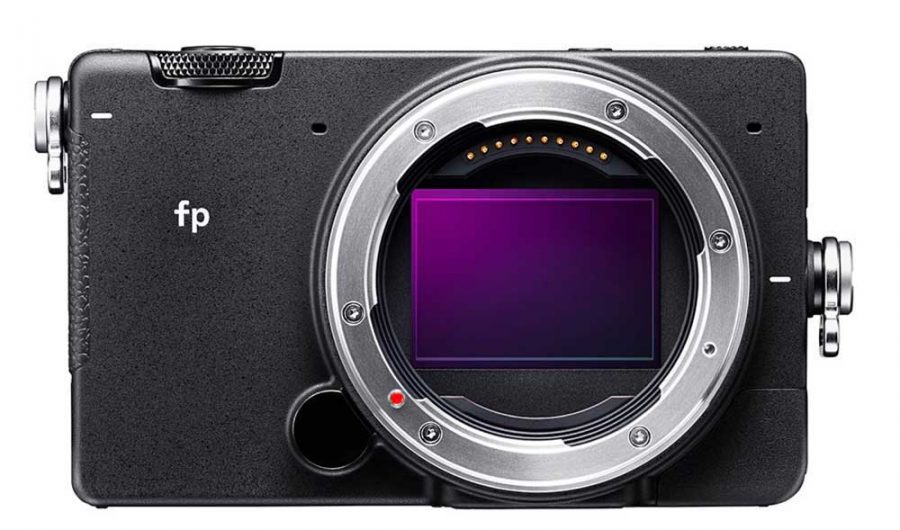

Two new cameras, three new lenses – what does it tell us about where we’re going?
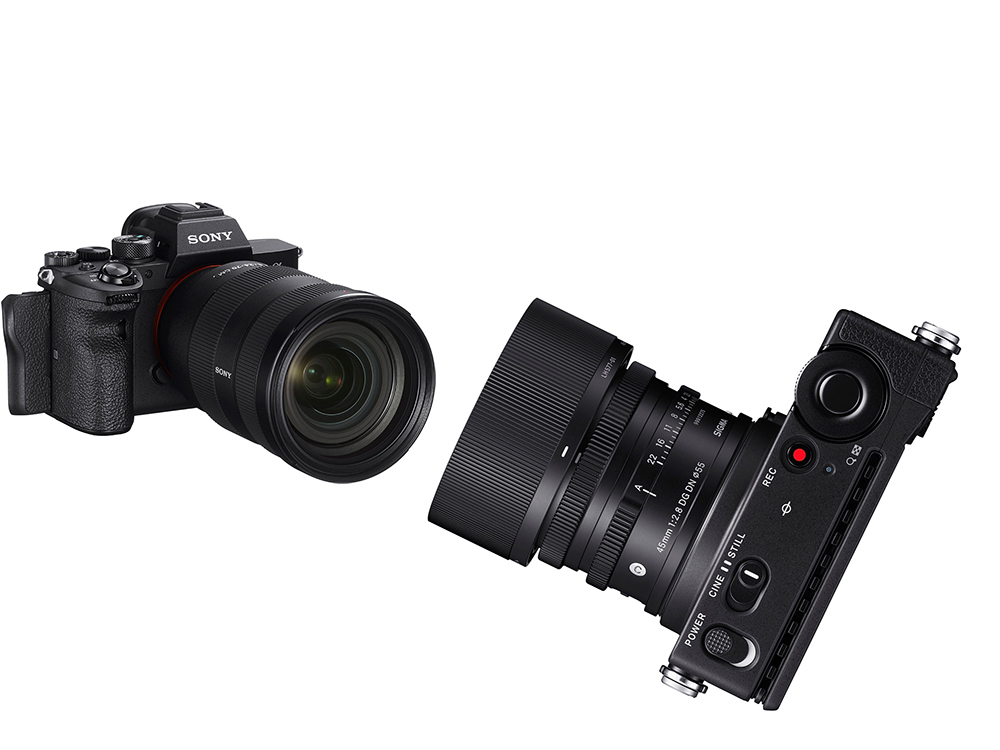
In mid-July of 2018, there were only three mirrorless systems of interest to most serious photographers. Sony full-frame, Fujifilm APS-C and Micro 4/3 all had significant followings. There were a few other systems on the fringes. Sony APS-C bodies and lenses were, and still are, an often-ignored adjunct to the full-frame system. There were few APS-C dedicated lenses worth using, and the bodies weren’t much smaller or lighter than an a7 series full-frame body.
Canon EOS-M was barely a consideration for the typical Luminous Landscape reader, largely because the few available lenses were almost all of “kit lens” quality. Nikon had occasionally introduced an interesting body or lens for the Nikon 1 system (including an underwater body and a couple of lenses submersible to 49 feet/15 meters), but there was no steady commitment to the system and the small sensor held it back. At the extreme high end, Leica had a few bodies in the venerable M mount and their new L/TL mount and both Hasselblad and Fujifilm had one medium format mirrorless body each, with small lens lineups.
In the past year, we’ve gone from three really viable mirrorless systems (Sony, Fujifilm, Micro 43) from four manufacturers to no less than seven systems from seven manufacturers in four sensor sizes. Nikon has made a direct run at Sony’s full-frame business with the Z system. Canon has introduced EOS-R bodies and lenses, most of which don’t match up very well – there are beautiful high-end lenses just waiting for a body to do them justice, and there are relatively inexpensive bodies awaiting affordable lenses. In perhaps the strangest body/lens pairing in recent history, the standard kit lens for Canon’s lower-end EOS-RP body is not a native lens – it’s a DSLR lens on an adapter. Panasonic and now Sigma have introduced affordable and interesting bodies and lenses revitalizing Leica’s L-mount (which is now clearly primarily a full-frame mount). Fujifilm has made their commitment to the medium-format GFX system clear with two new bodies and multiple lens releases.
Just in the past week, Sigma and Sony have each introduced a new camera body that offers a hint of future directions. Sony’s A7r IV offers the highest resolution yet seen in a full-frame body, along with advances in dynamic range, autofocus and durability. It’s an evolutionary step, at once unsurprising and showing that the engineering behind the tools we use has not hit a wall. Sigma’s fp is an unfamiliar package of what is probably a familiar image sensor (from the specifications, it seems to share a sensor with the Sony A7 III, Nikon Z6 and Panasonic S1). While Sony is pushing the envelope of today’s sensor technology, Sigma is experimenting with camera design.

Of the two, the A7r IV is the easier to understand. It’s an expected upgrade of the A7r III – a 19% improvement in linear resolution, improved dynamic range and a few new features. While the sensor is brand-new, it’s actually the last to reach the market of a set of four new Sony sensors using the same technology. The 26.7 MP sensor in the Fujifilm X-T3, the 61 MP sensor in the A7r IV, the 102 MP sensor in Fujifilm’s GFX 100 and the 151 MP sensor in the Phase One IQ4 150 are all stablemates using exactly the same pixel size and very similar underlying technology. They may not precisely be different sizes of the same sensor, but if they aren’t, they’re very close to that.
While I have not held an A7r IV in my hands (or even seen one in person), the improvements to weather sealing and control placement seem like they will be welcome. It still looks like a Sony, but with some Nikon Z influence. A few controls have been enlarged or moved slightly and the grip has been redesigned a little bit. The rear dial, AF joystick and AF-on button are among the controls that have been moved. One press photo shows a sturdy-looking sealing gasket around the memory card slots, and another shows port covers with potentially improved sealing. We’ll have to wait and see how the A7r IV fares when Roger Cicala at LensRentals tears one down and inspects the weather sealing, and when Dave Etchells at Imaging Resource hits one with his camera sprinkler, but Sony’s claims of improved sealing seem to be borne out in a couple of press images.
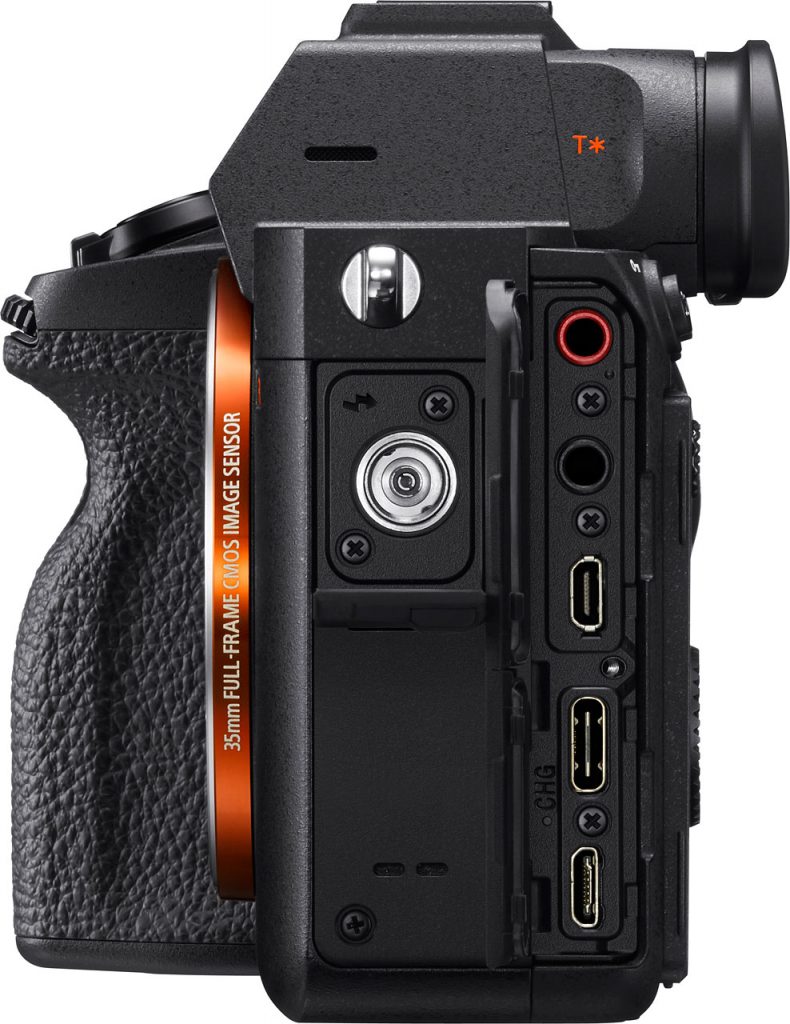
One specification that is slightly confusing is “15 stops” of dynamic range – in a 14-bit raw file. Unless Sony is modifying the raw data in some way, 15 stops of information don’t fit in a 14-bit file (a true, linear raw file is one bit per stop). They could be applying some form of baked-in tone curve to the file, creating a “not quite raw” file that does hold more than 14 bits. What’s more likely is that the conversation between Sony engineering and Sony marketing went something like this:
Engineer: “The new sensor can pick out 14.51 stops of difference on a test chart under some ideal conditions.”
Marketer: “Let’s round it – call it 15 stops.”
Engineer: “That last 0.51 stop in the shadows is so noisy nobody will ever use it in a photograph, and we’re going to have to cut it off to black to fit it in a 14-bit raw file, anyway.”
Marketer: “That doesn’t matter, it’s still 15 stops.”
Engineer: “But you can’t even get at the last half stop – and you wouldn’t want it if you could.”
Marketer: “It’s still 15 stops.”
Engineer: “ In a real world photograph, there’s somewhere around 12 – 12.25 stops you might actually print – it’s the best sensor we’ve ever made.”
Marketer: “It’s 15 stops – marketing’s not the real world – go back to the lab.”
Most modern high-end full-frame sensors have somewhere above 13 stops of measured engineering dynamic range, and something close to 12 stops of that is photographically useful. That’s a huge amount of range – in Zone System terms, it means that we have the ability to record some shadow detail below Zone 0 in Zone -I, and some highlight detail as high as Zone XI. Neither Zone -I nor Zone XI was included in the original Zone System, because no film could record there. Since this is a newer sensor generation, it would not be at all surprising if its dynamic range is slightly greater than the previous generation – right at or slightly above 12 stops of real information? The GFX 100, with its larger but very closely related sensor, records about 12.25 stops of photographically useful information, according to Photons to Photos.
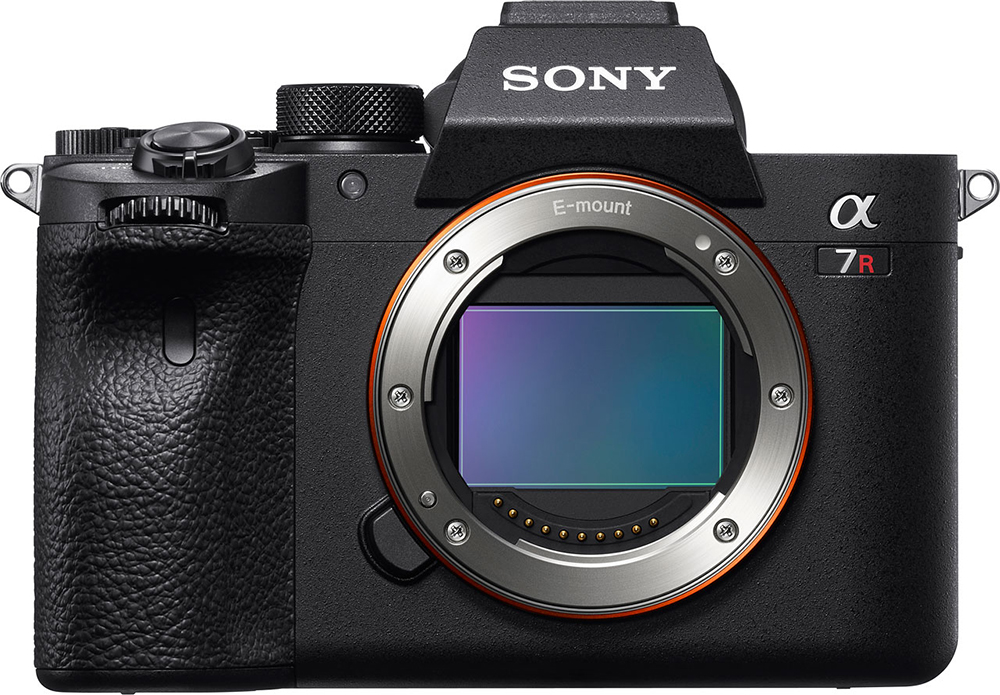
Time, and sensors, march on. As of today, the A7r IV almost certainly has the most resolving sensor, and the greatest dynamic range available short of the GFX 100. Does it make a difference in a print? If so, it’s probably very, very slight if compared to another modern >40 MP BSI sensor (A7r II or III, Z7, D850, S1r). It will also be a very slight difference if compared to an older, but larger CMOS sensor of similar resolution like the 50 MP medium format sensor in the GFX 50 series, the X1D and others. It’s likely to be a little more noticeable against the older 36 MP full frame sensor in the original A7r, D800 or Pentax K1. It will be very noticeable in large prints against any ~24 MP sensor, or any APS-C or smaller sensor. Even there, it’s noticeable in large prints. Except in a high dynamic range scene that blew a highlight on a less capable camera, it would be difficult or impossible to tell from any competent, modern camera in an image viewed on screen without pixel-peeping at 100%.
Who’s it for? If you shoot Sony and already have an A7r III, it’s probably not a meaningful upgrade unless you really need something on the new body (if the claim of significantly improved sealing holds up, that might be worthwhile for some landscape or wildlife photographers). The resolution and DR are almost certainly not reason enough to upgrade. If you have an A7r III and want an additional body, it’s probably worth waiting for, either to buy an A7r IV or to pick up a second A7r III at a good price. If you have an A7r II, the body is a more significant improvement – notably the more than doubled battery life and newer AF system. It’s certainly worth waiting for if you’re in the market for an additional body, and it’s a “maybe” upgrade. If you have a well-loved original A7r, the IV is a huge upgrade in everything from battery life to AF, and the two-generation sensor upgrade is probably well worth it if you print big. If you have a ~24 MP full-frame Sony, and you’re in the market for a high-resolution body, wait for the A7r IV, either to buy it or to get a good price on an A7r III.
If you don’t shoot Sony, it probably won’t change your decision. If you shoot Nikon mirrorless, there’s no reason at all to abandon a Z7 for this – you chose your Z7 over a similar Sony. If you have a Z6 and are considering the A7r IV, the only reason to jump systems would be if you don’t like the Z6 or Nikon’s Z roadmap (and think there’s something about the Sony system as a whole that suits you better). If you just want to add a high-resolution body, the Z7 is the way to go. If you shoot Nikon DSLR, a Z system upgrade will let you keep your lenses, flashes and possibly even batteries, plus the Z series just feel like the Nikons you’re used to.
If you’re a Canon DSLR shooter looking to make the jump to mirrorless but not satisfied with the EOS-R bodies, wait and see what Canon has coming. It’s possible that Canon’s high-resolution sensor will have significant disadvantages compared to the Sony-based sensors, and then a move to Sony (or Nikon, or L-mount) could make sense. It’s also possible that Canon will introduce a fully competitive high-resolution sensor, and then the EOS-R system has huge advantages for the Canon shooter. If you already own an EOS-R or EOS-RP, of course sit tight and wait for Canon’s new body if you want more resolution.
If you’re looking to move to high-resolution full-frame mirrorless from anything else, the A7r IV momentarily makes Sony more attractive. A choice to switch systems should be based on the whole system you are moving to, not one body that has advantages at one time. In a year or 18 months, there will almost certainly be a Nikon body with a version of this sensor with a little more resolution, ISO 64 and probably true 16-bit output. If you like Sony overall, choose Sony – if you prefer Nikon, choose Nikon. Don’t decide based on “who’s got the slightly better sensor right now” – both (and probably others) will always have an excellent sensor available.
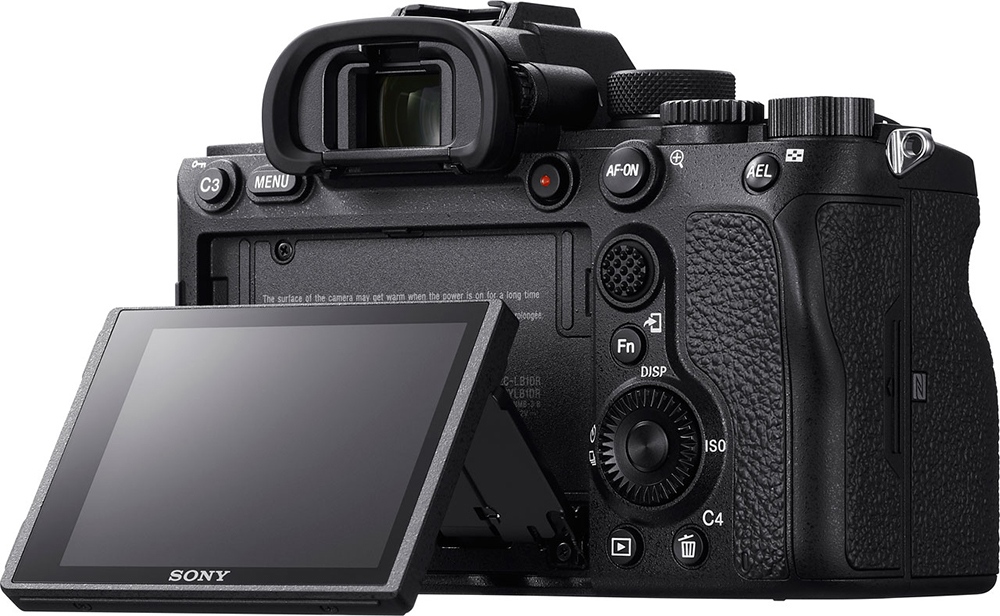
It is now clear that Fujifilm’s upgrade path from APS-C is medium format, that Canon EOS-M is a lower-end system, and that Micro 43 is specializing in sports, action and video. If you have one of those systems, you’re not satisfied with the path forward your manufacturer offers, and you’re considering full-frame mirrorless, look seriously at Sony, Nikon and perhaps Canon, L-mount or both (it might well be worth waiting to see what Canon’s body in this range is like) and choose a system.
If what you’re considering moving from is Fujifilm APS-C, ask yourself “how often do I print larger than 16×24?” (maybe 12×18” if you really look at prints closely). If it’s not often (or ever), you already have a system with great bodies and a wide range of terrific lenses. The image quality difference requires big prints to see. If you’re moving from Micro 43 or EOS-M, and you don’t intend to print big, consider Fujifilm APS-C along with the full-frame options.
Meanwhile, as Sony moves the bar incrementally at the high end, Sigma is introducing something that rethinks what full-frame mirrorless looks like, and even, perhaps what a camera looks like. Is the Sigma fp the right camera for you right now? Maybe not – it has a number of weird design features. Is it a creative look at what a camera could be? That it is – and in many ways, it’s more interesting than the rather conservative A7r IV. Sigma stripped the fp down to the bare minimum of what has to be in a full-frame mirrorless camera in order to record a usable image… Maybe the discussion at Sigma HQ went something like this?

Engineer 1: “How do we differentiate our new fp – we’re going to be buying a sensor from Sony until the Foveon’s ready, and that means we have the same sensor everybody else has?”
Engineer 2: “ Let’s go light – really light”.
Engineer 1: “ I like it – what can we cut out to save weight?”
Engineer 2: “ Do we really need an image stabilizer? They’re heavy!”
Engineer 1: “ Nope, and we don’t have one in the parts bin anyway – it’d delay the camera to include it, let it go”.
Engineer 2: “How about the grip – do we really need one?”
Engineer 1: “ I like that – but we’ve got to do something with the battery and the card slot”.
Engineer 2: “Stuff them in the bottom of the camera – I know it means a tiny battery and only one SD card, but they’ll fit”.
Engineer 1: “What do you think about the viewfinder?”
Engineer 2: “ Brilliant – let it go – we’ve got a screen.”
Engineer 3 (from the next room): “If you’re getting rid of everything, why not drop the shutter – just use the electronic shutter!”
Engineers 1 and 2 (in unison): “That’s a great idea – but keep the shutter button and the lens mount – we’re not RED, after all”
Every other full-frame mirrorless camera on the market has a grip, a viewfinder and a mechanical shutter. All except Canon add an in-body image stabilizer to this list of essentials. Sigma built a camera with none of the above. As shipped, it seems like it would be extremely uncomfortable to shoot handheld or on a tripod in a conventional manner – but it would be much easier to mount on a drone, a gimbal or some other odd location than any of its competitors.
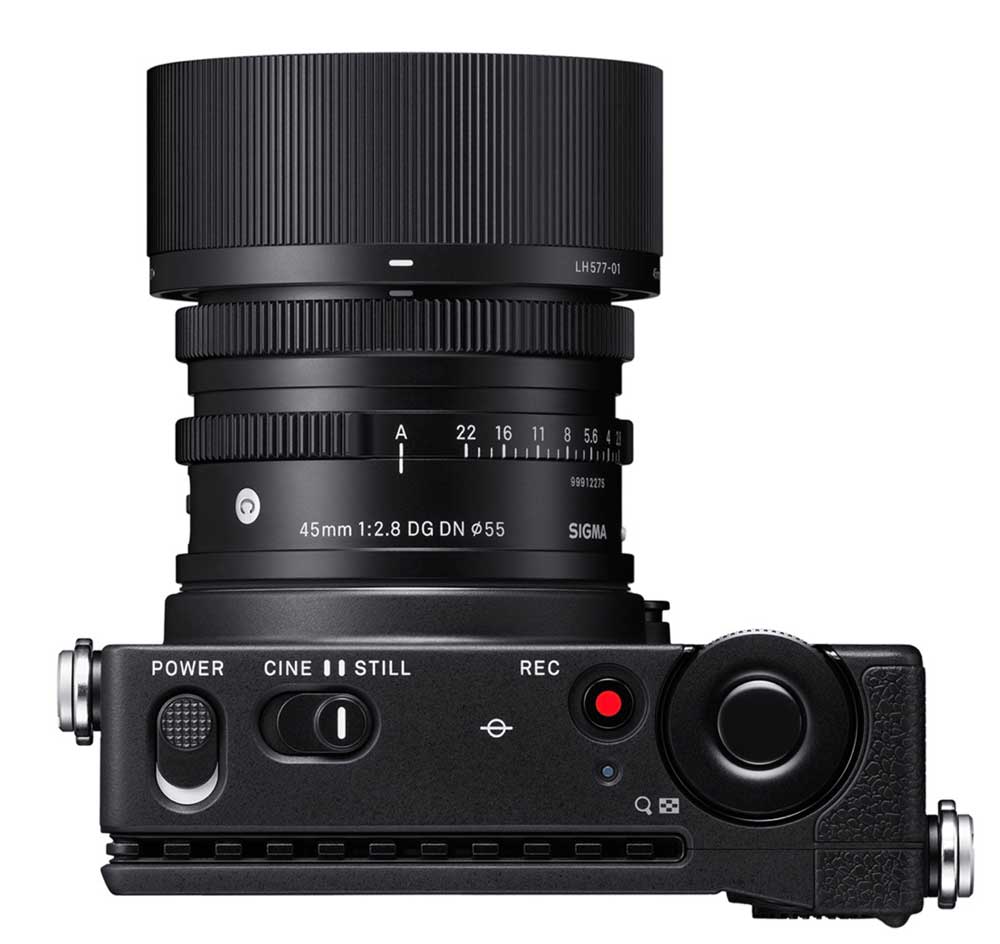
Even with the lightest possible lens (the Sigma 45mm f2.8 released with the camera), it’s still 637 grams or almost 1.5 lbs – it’s not going to be comfortable or stable to shoot at arm’s length with no grip like a cell phone ¼ of the weight. To shoot it handheld, it’ll need a grip of some kind and probably a viewfinder – but the fact they aren’t part of the body means that there are options in how to add those parts. If the only viewfinder Sigma offers is fixed to the hot shoe, with no ability to tilt, and the only grip is a right-side handgrip for average-sized hands, it’ll be a disappointment. What if they offered a tilting viewfinder, though? A pistol grip for below the camera? A left-hand grip for lefty photographers? Very small or very large grips? How about a gimbal/grip combo with its own finder? If it has a very good phone app, it could be remote controlled from places no other camera of its quality can fit.
For a camera with this flexibility, and one that makes as many sacrifices as it does to gain its flexibility, the size and weight of most L mount lenses is a disappointment. Sigma’s brand-new 45mm f2.8 is a conspicuous exception announced with, and ideally suited to, the fp body. Even two of Sigma’s three lenses announced with the camera are large and heavy. The 14-24 mm f2.8 is nearly twice the weight of Nikon’s 14-30mm Z mount lens (the Sigma is a stop faster, but it’s not small). The 35mm f1.2 is roughly the size and weight of a Zeiss Otus.
The only L mount lenses under 500 grams (roughly 1 lb) other than Sigma’s 45mm f2.8 are low-end, manual-focus Kipon lenses (manual focus is a huge problem in many mounting situations) . There is one Sigma Art macro lens just over the 500 gram mark, then the Panasonic 24-105mm zoom and a couple more Art lenses around 700 grams, then everything else is around 1 kg and up. Sigma needs to commit to making more lenses like the 45mm f2.8 – a collection of modest aperture primes optimized for compactness and weight to match the fp body, whether on a grip or a more adventurous mount. They should also make some lightweight modest-aperture zooms, even variable-aperture if necessary, with image stabilization for handheld use on various grips. With the present collection of L-mount glass outside of the 45mm f2.8, a Nikon or Sony body+lens combo will generally be smaller and lighter than the fp at any given focal length, although it may be harder to balance on a drone or gimbal because of the weight in the right hand grip.
Besides the remarkably compact and lightweight body, the other standout feature of the Sigma fp is its shutter system. In a conventional sense, there isn’t one – it relies exclusively on the electronic shutter built in to the sensor. The great advantage of electronic shutter (which most if not all mirrorless cameras offer as an option) is that it is completely silent with no moving parts. The disadvantages are that it is generally incompatible with flash (Sigma seems to have some limited flash compatibility – but the flash sync speed is 1/30 second!), that it produces odd artifacts with fluorescent and some LED lighting, and with TV or computer screens, and that moving objects generate artifacts.
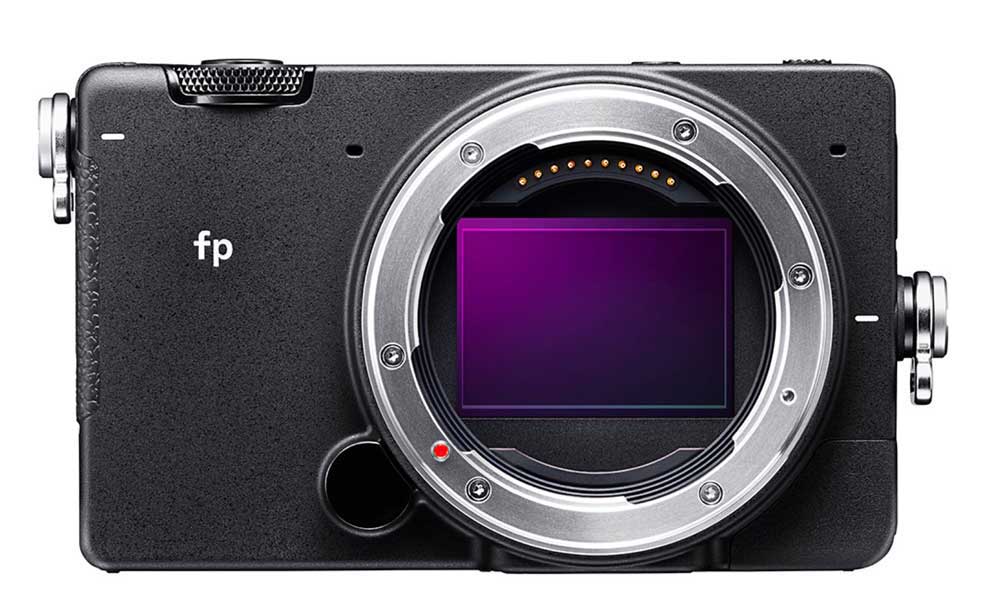
All of these limits stem from the same limitation – an electronic shutter can have a very fast shutter speed, but any electronic shutter that has reached consumer still cameras has a very slow scan speed. At shutter speeds slower than the scan speed, the entire sensor is exposed at once for the time selected. Above the scan speed, instead of exposing the whole sensor area at once, each line of pixels is read for the selected time, but reading across or down the frame sequentially, so reading the entire frame takes much longer (it requires the scan speed). If you set an exposure of 1/3000 of a second on a camera with a 1/30 second scan speed, each pixel is only gathering light for 1/3000 second, but it still takes 1/30 second to read out the whole sensor – it’s read in 100 groups of pixels. Any object that moves during that 1/30 second will be distorted. Fluorescent lights, many LEDs, and most (if not all) screens actually flash relatively close to electronic shutter scan speeds, and that flashing translates to banding in the image, since some part of the frame was exposed when the rapidly flashing light was off. A flash (which fires once, much faster than the scan speed) only works if the whole sensor is being exposed when it goes off (shutter speed below the scan speed). Mechanical shutters actually also scan the frame, but they do it much faster – often around 1/250 second instead of 1/15 or 1/30 second. The flash sync speed of a mechanical shutter is its maximum scan speed – the flash fires during the moment when the first curtain has moved across the frame, before the second curtain starts.
One advantage of an electronic shutter is that it’s very easy to do multiple exposures without vibration – there’s nothing moving in the camera. Sigma claims a minimum ISO of 6 for the FP, and one likely way to achieve this would be to take multiple exposures at a more standard ISO (wherever the sensor performs optimally, perhaps 100) and sum the results. Highlights won’t blow because the sensor is reset between sub-exposures, while shadows receive accumulated exposure, lifting them out of the noise. It is possible to get extremely high dynamic range out of a technique like this, either by using enough bits in the final raw file that the largest (summed) highlight value won’t blow out at the maximum value the file can handle, or by applying a curve that keeps the highlights under control as the values are added. Since Sigma doesn’t appear to be using 16-bit raw files, they may have some form of curve?
Who’s it for? Maybe not many of us right now? The list of requirements for it to be the best choice is daunting. First, you have to value the size and weight, which also means you have to be OK with the 45mm f2.8 (or a Kipon MF lens), or with waiting for more compact lenses. If the size and weight aren’t the first consideration, an A7 III or a Z6 can do anything the fp can do (with the same sensor), and if you use any current L-mount lens except the 45mm f2.8, the Z6 or A7 III will actually be lighter. They don’t sum exposures in camera to produce the very low ISO, but they do have electronic shutter modes, and it’s possible to sum exposures later on the computer.
Second, you have to be OK rigging around the lack of viewfinder and grip. Whether you’re going to add those items to shoot handheld or on a tripod, or whether you’re going to put the camera on a gimbal or a drone, there are pieces required to use it comfortably that aren’t in the box.
On the other hand, looking at what the Sigma FP is right now is missing the point. It’s like the grizzled old photojournalist looking at his weatherbeaten Leica M3 in April, 1959 when someone first showed him a Nikon F. Yes, the Nikon was much heavier. Yes, the lenses were heavier and not as good – but the single lens reflex finder on top of that Nikon F was a revolution in camera design. The Nikon wasn’t ready to replace the Leica on that day, but the offspring of that first Nikon F would be the dominant camera design for over 50 years.
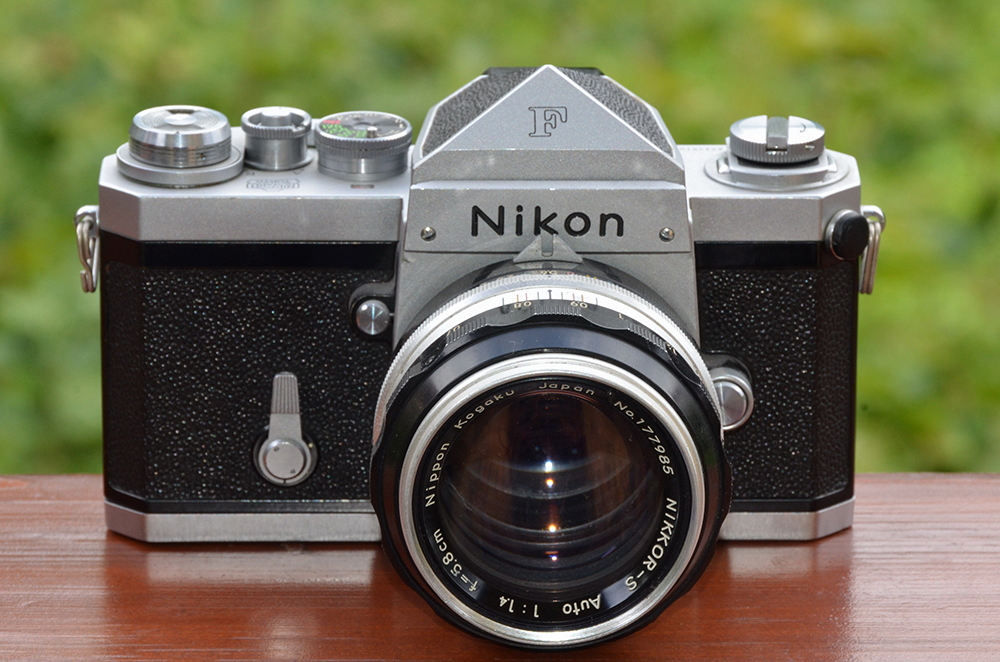
Imagine the same photojournalist’s daughter working in February, 1985. She has a brassed Nikon F3 around her neck, and the camera salesperson shows her a Maxxum/Dynax 7000. She looks at her Nikon with its controls so easy to hand, and at the strange buttons on the Minolta, and she laughs. The salesperson says “but look at the autofocus on the new Minolta”. So many other things were wrong with the Minolta that the autofocus didn’t matter that day in 1985 (and it didn’t work very well anyway) – but essentially every camera released since the Maxxum 7000 has featured autofocus, and soon enough, it worked.
Where we are as we look at the Sigma fp is that we are the children of that photographer in 1985, and the grandchildren of the photographer in 1959. It’s strange, and many things about it probably won’t work all that well. We look at our A7r mk IVs, Z7s, D850s and GFX 100s and we can’t imagine replacing them with something like that. Right now, we’d be stupid to (except for specialized uses) – but what kind of shutter will the cameras of 2025 have? I suspect it’ll be fully electronic (albeit with a much higher scan speed). Will the viewfinder be permanently connected to the body? Why in the world would it be? If you can take it off and use it wirelessly, the camera can be up on a drone, or on a tripod in a tricky spot, or attached to a tree, while the viewfinder is at the photographer’s eye. Yes, it’ll mount to the body when that’s the best place for it (for handheld use) – phones won’t replace viewfinders because a viewfinder at one’s eye is a useful way to compose an image.
If I had to guess what a camera will look like in 2025, my guess would be much closer to the fp than to my Nikon Z7 or to the A7r IV. It’ll ship with a viewfinder and a grip, because those things are necessary – but they’ll be removable and reconfigurable, because they don’t need to be permanent (unless the grip stays because there’s no better place for the battery – even then, there may well be mounting options). The shutter will be electronic, and I suspect there will be enough pixels that the image stabilization will be fully electronic as well. The only moving parts will be controls and the diaphragm and focus mechanism in the lens.
Dan Wells
July 2019

Lorem ipsum dolor sit amet, consectetur adipiscing elit, sed do eiusmod tempor incididunt ut labore et dolore magna aliqua. Ut enim ad minim veniam, quis nostrud exercitation ullamco laboris nisi ut aliquip ex ea commodo consequat. Duis aute irure dolor in reprehenderit in voluptate velit esse cillum dolore eu fugiat nulla pariatur. Excepteur sint occaecat cupidatat non proident, sunt in culpa qui officia deserunt mollit anim id est laborum.
Lorem ipsum dolor sit amet, consectetur adipiscing elit, sed do eiusmod tempor incididunt ut labore et dolore magna aliqua. Ut enim ad minim veniam, quis nostrud exercitation ullamco laboris nisi ut aliquip ex ea commodo consequat. Duis aute irure dolor in reprehenderit in voluptate velit esse cillum dolore eu fugiat nulla pariatur. Excepteur sint occaecat cupidatat non proident, sunt in culpa qui officia deserunt mollit anim id est laborum.
Lorem ipsum dolor sit amet, consectetur adipiscing elit, sed do eiusmod tempor incididunt ut labore et dolore magna aliqua. Ut enim ad minim veniam, quis nostrud exercitation ullamco laboris nisi ut aliquip ex ea commodo consequat. Duis aute irure dolor in reprehenderit in voluptate velit esse cillum dolore eu fugiat nulla pariatur. Excepteur sint occaecat cupidatat non proident, sunt in culpa qui officia deserunt mollit anim id est laborum.

Lorem ipsum dolor sit amet, consectetur adipiscing elit, sed do eiusmod tempor incididunt ut labore et dolore magna aliqua. Ut enim ad minim veniam, quis nostrud exercitation ullamco laboris nisi ut aliquip ex ea commodo consequat. Duis aute irure dolor in reprehenderit in voluptate velit esse cillum dolore eu fugiat nulla pariatur. Excepteur sint occaecat cupidatat non proident, sunt in culpa qui officia deserunt mollit anim id est laborum.
Lorem ipsum dolor sit amet, consectetur adipiscing elit, sed do eiusmod tempor incididunt ut labore et dolore magna aliqua. Ut enim ad minim veniam, quis nostrud exercitation ullamco laboris nisi ut aliquip ex ea commodo consequat. Duis aute irure dolor in reprehenderit in voluptate velit esse cillum dolore eu fugiat nulla pariatur. Excepteur sint occaecat cupidatat non proident, sunt in culpa qui officia deserunt mollit anim id est laborum.
Lorem ipsum dolor sit amet, consectetur adipiscing elit, sed do eiusmod tempor incididunt ut labore et dolore magna aliqua. Ut enim ad minim veniam, quis nostrud exercitation ullamco laboris nisi ut aliquip ex ea commodo consequat. Duis aute irure dolor in reprehenderit in voluptate velit esse cillum dolore eu fugiat nulla pariatur. Excepteur sint occaecat cupidatat non proident, sunt in culpa qui officia deserunt mollit anim id est laborum.
Lorem ipsum dolor sit amet, consectetur adipiscing elit, sed do eiusmod tempor incididunt ut labore et dolore magna aliqua. Ut enim ad minim veniam, quis nostrud exercitation ullamco laboris nisi ut aliquip ex ea commodo consequat. Duis aute irure dolor in reprehenderit in voluptate velit esse cillum dolore eu fugiat nulla pariatur. Excepteur sint occaecat cupidatat non proident, sunt in culpa qui officia deserunt mollit anim id est laborum.
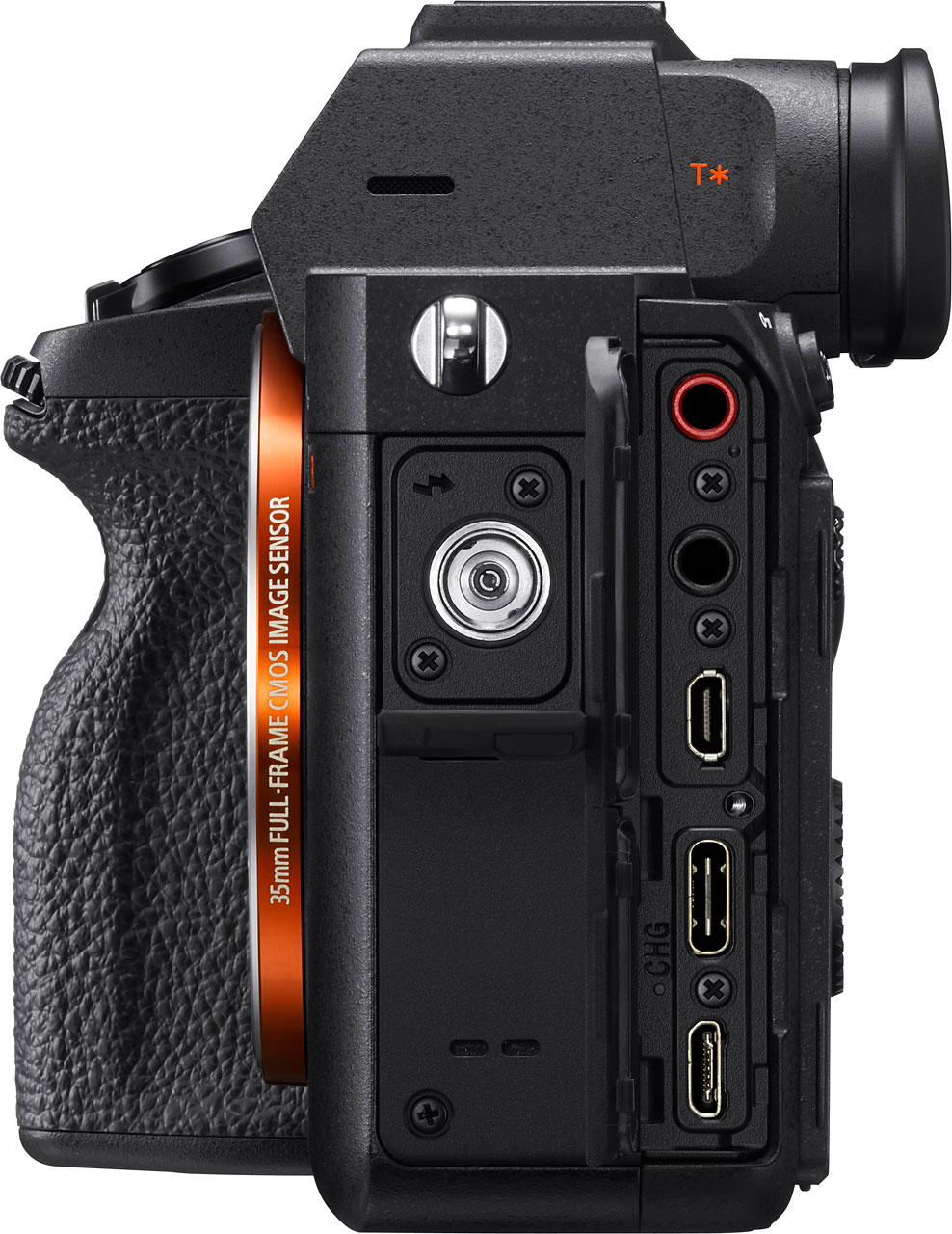
Lorem ipsum dolor sit amet, consectetur adipiscing elit, sed do eiusmod tempor incididunt ut labore et dolore magna aliqua. Ut enim ad minim veniam, quis nostrud exercitation ullamco laboris nisi ut aliquip ex ea commodo consequat. Duis aute irure dolor in reprehenderit in voluptate velit esse cillum dolore eu fugiat nulla pariatur. Excepteur sint occaecat cupidatat non proident, sunt in culpa qui officia deserunt mollit anim id est laborum.
Lorem ipsum dolor sit amet, consectetur adipiscing elit, sed do eiusmod tempor incididunt ut labore et dolore magna aliqua. Ut enim ad minim veniam, quis nostrud exercitation ullamco laboris nisi ut aliquip ex ea commodo consequat. Duis aute irure dolor in reprehenderit in voluptate velit esse cillum dolore eu fugiat nulla pariatur. Excepteur sint occaecat cupidatat non proident, sunt in culpa qui officia deserunt mollit anim id est laborum.
Lorem ipsum dolor sit amet, consectetur adipiscing elit, sed do eiusmod tempor incididunt ut labore et dolore magna aliqua. Ut enim ad minim veniam, quis nostrud exercitation ullamco laboris nisi ut aliquip ex ea commodo consequat. Duis aute irure dolor in reprehenderit in voluptate velit esse cillum dolore eu fugiat nulla pariatur. Excepteur sint occaecat cupidatat non proident, sunt in culpa qui officia deserunt mollit anim id est laborum.

Lorem ipsum dolor sit amet, consectetur adipiscing elit, sed do eiusmod tempor incididunt ut labore et dolore magna aliqua. Ut enim ad minim veniam, quis nostrud exercitation ullamco laboris nisi ut aliquip ex ea commodo consequat. Duis aute irure dolor in reprehenderit in voluptate velit esse cillum dolore eu fugiat nulla pariatur. Excepteur sint occaecat cupidatat non proident, sunt in culpa qui officia deserunt mollit anim id est laborum.
Lorem ipsum dolor sit amet, consectetur adipiscing elit, sed do eiusmod tempor incididunt ut labore et dolore magna aliqua. Ut enim ad minim veniam, quis nostrud exercitation ullamco laboris nisi ut aliquip ex ea commodo consequat. Duis aute irure dolor in reprehenderit in voluptate velit esse cillum dolore eu fugiat nulla pariatur. Excepteur sint occaecat cupidatat non proident, sunt in culpa qui officia deserunt mollit anim id est laborum.

Lorem ipsum dolor sit amet, consectetur adipiscing elit, sed do eiusmod tempor incididunt ut labore et dolore magna aliqua. Ut enim ad minim veniam, quis nostrud exercitation ullamco laboris nisi ut aliquip ex ea commodo consequat. Duis aute irure dolor in reprehenderit in voluptate velit esse cillum dolore eu fugiat nulla pariatur. Excepteur sint occaecat cupidatat non proident, sunt in culpa qui officia deserunt mollit anim id est laborum.
Lorem ipsum dolor sit amet, consectetur adipiscing elit, sed do eiusmod tempor incididunt ut labore et dolore magna aliqua. Ut enim ad minim veniam, quis nostrud exercitation ullamco laboris nisi ut aliquip ex ea commodo consequat. Duis aute irure dolor in reprehenderit in voluptate velit esse cillum dolore eu fugiat nulla pariatur. Excepteur sint occaecat cupidatat non proident, sunt in culpa qui officia deserunt mollit anim id est laborum.
Lorem ipsum dolor sit amet, consectetur adipiscing elit, sed do eiusmod tempor incididunt ut labore et dolore magna aliqua. Ut enim ad minim veniam, quis nostrud exercitation ullamco laboris nisi ut aliquip ex ea commodo consequat. Duis aute irure dolor in reprehenderit in voluptate velit esse cillum dolore eu fugiat nulla pariatur. Excepteur sint occaecat cupidatat non proident, sunt in culpa qui officia deserunt mollit anim id est laborum.
Lorem ipsum dolor sit amet, consectetur adipiscing elit, sed do eiusmod tempor incididunt ut labore et dolore magna aliqua. Ut enim ad minim veniam, quis nostrud exercitation ullamco laboris nisi ut aliquip ex ea commodo consequat. Duis aute irure dolor in reprehenderit in voluptate velit esse cillum dolore eu fugiat nulla pariatur. Excepteur sint occaecat cupidatat non proident, sunt in culpa qui officia deserunt mollit anim id est laborum.

Lorem ipsum dolor sit amet, consectetur adipiscing elit, sed do eiusmod tempor incididunt ut labore et dolore magna aliqua. Ut enim ad minim veniam, quis nostrud exercitation ullamco laboris nisi ut aliquip ex ea commodo consequat. Duis aute irure dolor in reprehenderit in voluptate velit esse cillum dolore eu fugiat nulla pariatur. Excepteur sint occaecat cupidatat non proident, sunt in culpa qui officia deserunt mollit anim id est laborum.

Lorem ipsum dolor sit amet, consectetur adipiscing elit, sed do eiusmod tempor incididunt ut labore et dolore magna aliqua. Ut enim ad minim veniam, quis nostrud exercitation ullamco laboris nisi ut aliquip ex ea commodo consequat. Duis aute irure dolor in reprehenderit in voluptate velit esse cillum dolore eu fugiat nulla pariatur. Excepteur sint occaecat cupidatat non proident, sunt in culpa qui officia deserunt mollit anim id est laborum.

Lorem ipsum dolor sit amet, consectetur adipiscing elit, sed do eiusmod tempor incididunt ut labore et dolore magna aliqua. Ut enim ad minim veniam, quis nostrud exercitation ullamco laboris nisi ut aliquip ex ea commodo consequat. Duis aute irure dolor in reprehenderit in voluptate velit esse cillum dolore eu fugiat nulla pariatur. Excepteur sint occaecat cupidatat non proident, sunt in culpa qui officia deserunt mollit anim id est laborum.

Lorem ipsum dolor sit amet, consectetur adipiscing elit, sed do eiusmod tempor incididunt ut labore et dolore magna aliqua. Ut enim ad minim veniam, quis nostrud exercitation ullamco laboris nisi ut aliquip ex ea commodo consequat. Duis aute irure dolor in reprehenderit in voluptate velit esse cillum dolore eu fugiat nulla pariatur. Excepteur sint occaecat cupidatat non proident, sunt in culpa qui officia deserunt mollit anim id est laborum.
Lorem ipsum dolor sit amet, consectetur adipiscing elit, sed do eiusmod tempor incididunt ut labore et dolore magna aliqua. Ut enim ad minim veniam, quis nostrud exercitation ullamco laboris nisi ut aliquip ex ea commodo consequat. Duis aute irure dolor in reprehenderit in voluptate velit esse cillum dolore eu fugiat nulla pariatur. Excepteur sint occaecat cupidatat non proident, sunt in culpa qui officia deserunt mollit anim id est laborum.
Lorem ipsum dolor sit amet, consectetur adipiscing elit, sed do eiusmod tempor incididunt ut labore et dolore magna aliqua. Ut enim ad minim veniam, quis nostrud exercitation ullamco laboris nisi ut aliquip ex ea commodo consequat. Duis aute irure dolor in reprehenderit in voluptate velit esse cillum dolore eu fugiat nulla pariatur. Excepteur sint occaecat cupidatat non proident, sunt in culpa qui officia deserunt mollit anim id est laborum.
Lorem ipsum dolor sit amet, consectetur adipiscing elit, sed do eiusmod tempor incididunt ut labore et dolore magna aliqua. Ut enim ad minim veniam, quis nostrud exercitation ullamco laboris nisi ut aliquip ex ea commodo consequat. Duis aute irure dolor in reprehenderit in voluptate velit esse cillum dolore eu fugiat nulla pariatur. Excepteur sint occaecat cupidatat non proident, sunt in culpa qui officia deserunt mollit anim id est laborum.
You May Also Enjoy...
Hand’s On: new Sony A9III and Sony 50mm G Master, Sony 85mm G Master, Sony 75-350mm APS lenses
A quick hands on look at Sony A9iii and the Sony APS 75-350mm len
The best wide-angle zoom in the world? The Fujinon G5 20-35mm f4 R WR reviewed.
FUJIFILM GF 20-35mm f/4 R WR L
